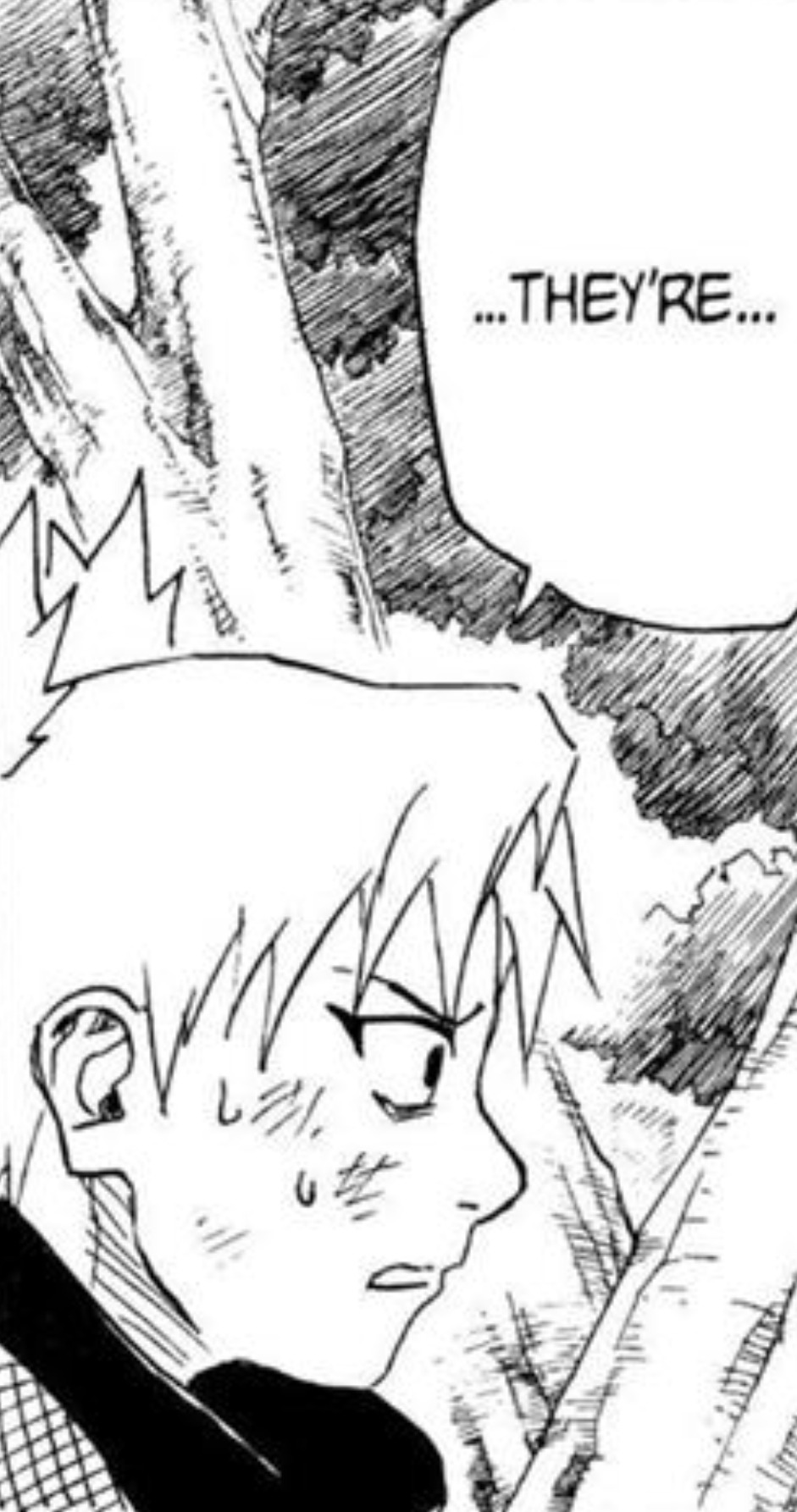#vol 129
Explore tagged Tumblr posts
Text

#hxh#illumi zoldyck#chimera ant arc#vol. 21#ch. 219#p. 129#killua zoldyck#mentions of illumi#i know i'm stretching the definition of “panel containing illumi” here#but killua deserves to have his victory scene after all of that#also lmao rammot is so so lost
21 notes
·
View notes
Text
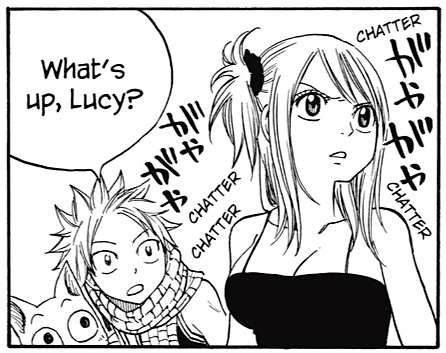

wouldn't be surprised if Happy hides a dictionary somewhere in his sack at all times
57 notes
·
View notes
Text

13 notes
·
View notes
Text


usopp and the giants have so many connections throughout one piece but the fact that this lie that usopp told kaya is an actual thing that happened to dorry and broggy is just so funny but also touching-like these are real warriors according to usopp. this is what he is striving to be, and he also said how he used to lie about pirate adventures but now he is going to live them in reality. and then we get this information about his heroes. truly a revelation
#lmao#one piece#psy reads one piece#usopp#vol 15 ch 129#usopp and giants#i wish usopp could have heard this story#god usopp
16 notes
·
View notes
Text
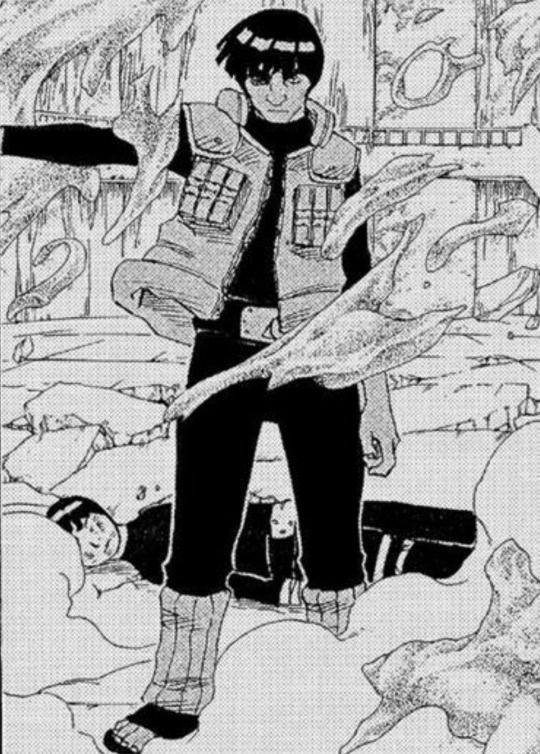
#naruto#vol 15#ch 129#konoha crush#rock lee#maito gai#might guy#these sre flashbacks but the blog is clled everyrocklee not 'somerocklees'
48 notes
·
View notes
Text





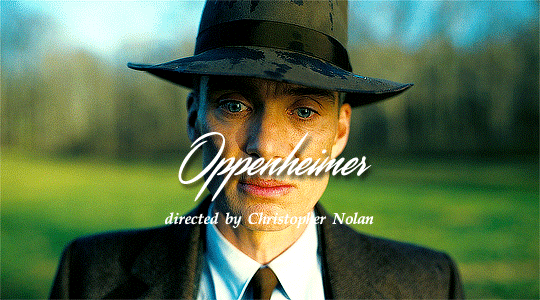
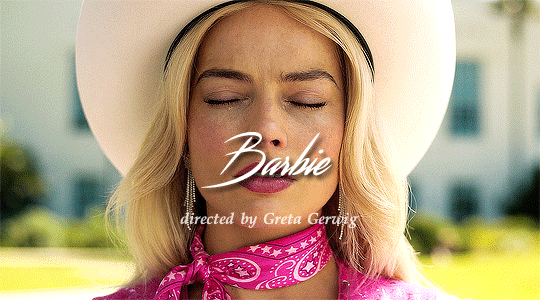


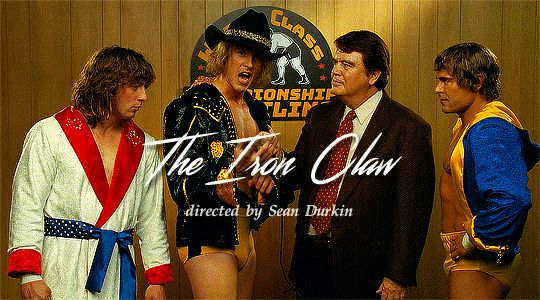
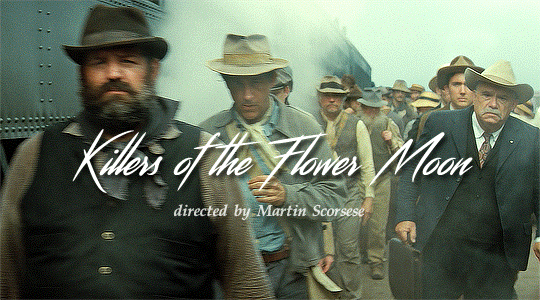
TOP 10
Past Lives
Spider-Man: Across the Spider-Verse
How to Blow Up a Pipeline
Poor Things
Oppenheimer
Barbie
BlackBerry
The Holdovers
The Iron Claw
Killers of the Flower Moon
MY LETTERBOXD Grade A 11. The Killer 12. Beau Is Afraid 13. Dream Scenario 14. Guardians of the Galaxy Vol. 3 15. Godzilla Minus One 16. American Fiction 17. They Cloned Tyrone 18. Evil Dead Rise 19. Eileen 20. The Artifice Girl 21. Teenage Mutant Ninja Turtles: Mutant Mayhem 22. Talk to Me 23. Reality 24. Leave the World Behind 25. A Thousand and One 26. Mission: Impossible – Dead Reckoning Part One 27. Are You There God? It’s Me, Margaret. 28. Theater Camp 29. Carmen 30. Merry Little Batman 31. Priscilla 32. Society of the Snow 33. Infinity Pool 34. Enys Men 35. Sanctuary 36. Rye Lane 37. Skinamarink 38. Monster 39. Anatomy of a Fall 40. Landscape with Invisible Hand 41. Reptile 42. Sisu 43. Pinball: The Man Who Saved the Game 44. No One Will Save You 45. Tetris 46. May December 47. The Zone of Interest 48. V/H/S/85 49. Dumb Money 50. El Conde 51. Arnold 52. Maestro 53. Napoleon 54. 20 Days in Mariupol 55. Influencer 56. The Creator 57. Origin 58. Thanksgiving 59. Next Goal Wins 60. The Boy and the Heron 61. Bottoms 62. Wonka
[Press Keep Reading For The Full Graded List]
Grade B
63. God Is a Bullet 64. No Hard Feelings 65. Joy Ride 66. Fair Play 67. Cocaine Bear 68. NYAD 69. Asteroid City 70. Nowhere 71. The Angry Black Girl and Her Monster 72. Divinity 73. The Equalizer 3 74. The Last Voyage of the Demeter 75. Venus 76. Butcher’s Crossing 77. Somewhere in Queens 78. The Persian Version 79. Boston Strangler 80. Polite Society 81. Miguel Wants to Fight 82. The Color Purple 83. The Royal Hotel 84. Saw X 85. All of Us Strangers 86. Fallen Leaves 87. Ferrari 88. Elemental 89. Peter Pan & Wendy 90. Renfield 91. Cat Person 92. Scream VI 93. The Hunger Games: The Ballad of Songbirds & Snakes 94. BS High 95. Blue Beetle 96. Huesera: The Bone Woman 97. When Evil Lurks 98. Dark Harvest 99. A Good Person 100. Final Cut 101. Knock at the Cabin 102. Quiz Lady 103. Leo 104. Air 105. The Super Mario Bros. Movie 106. Batman: The Doom That Came to Gotham 107. John Wick: Chapter 4 108. Beaten to Death 109. The Wrath of Becky 110. Passages 111. Transformers: Rise of the Beasts 112. Gran Turismo 113. 65 114. Sick 115. Sister Death 116. The Blackening 117. Please Don’t Destroy: The Treasure of Foggy Mountain 118. Flamin’ Hot 119. Nimona 120. Cobweb 121. Totally Killer 122. What’s Love Got to Do with It? 123. Sharper 124. Unseen 125. Dunki 126. Bird Box Barcelona 127. The Marvels 128. Shazam! Fury of the Gods
Grade C
129. Wildflower 130. Freelance 131. M3GAN 132. Strays 133. Sympathy for the Devil 134. Creed III 135. Chevalier 136. The Marsh King’s Daughter 137. A Haunting in Venice 138. The Little Mermaid 139. Silent Night 140. Master Gardener 141. The Flash 142. Fast X 143. The Pope’s Exorcist 144. Saltburn 145. Kandahar 146. Stand 147. Plane 148. Indiana Jones and the Dial of Destiny 149. Fingernails 150. Quicksand 151. Fool’s Paradise 152. Migration 153. Rustin 154. The Covenant 155. Good Burger 2 156. The Pod Generation 157. Alice, Darling 158. Insidious: The Red Door 159. Missing 160. Shotgun Wedding 161. You Hurt My Feelings 162. The Boogeyman 163. Showing Up 164. Aquaman and the Lost Kingdom 165. Champions 166. Consecration 167. The Nun II 168. Biosphere 169. House Party 170. The Exorcist: Believer 171. Big George Foreman 172. Dungeons & Dragons: Honor Among Thieves 173. Children of the Corn 174. The Beanie Bubble 175. Ant-Man and the Wasp: Quantumania
Grade F
176. Anyone But You 177. Marlowe 178. Paint 179. Extraction 2 180. It Lives Inside 181. Deliver Us 182. Trolls Band Together 183. Finestkind 184. Corner Office 185. Wish 186. Prisoner’s Daughter 187. Pain Hustlers 188. Foe 189. The Mother 190. Old Dads 191. Ghosted 192. Ruby Gillman, Teenage Kraken 193. Haunted Mansion 194. Mafia Mamma 195. Five Nights at Freddy’s 196. The Machine 197. Justice League: Warworld 198. We Have a Ghost 199. What Comes Around 200. Legion of Super-Heroes 201. The Boys in the Boat 202. Attachment 203. Operation Fortune: Ruse de Guerre 204. About My Father 205. You People 206. Meg 2: The Trench 207. Pathaan 208. Rebel Moon - Part One: A Child of Fire 209. Assassin 210. Dalíland 211. Vacation Friends 2
Bottom 10
212. Sound of Freedom 213. Winnie the Pooh: Blood and Honey 214. When You Finish Saving The World 215. Heart of Stone 216. Family Switch 217. Expend4bles 218. Sweetwater 219. Hypnotic 220. 80 for Brady 221. Spinning Gold
#kane52630#filmedit#top 10 2023#top 10 year#usergal#userlera#userkd#userbrittany#mikaeled#userconstance#userel#past lives#spider man across the spider verse#how to blow up a pipeline#poor things#oppenheimer#barbie#blackberry#the holdovers#the iron claw#killers of the flower moon#movie
1K notes
·
View notes
Text
TGCF chapter 239 (book 5)/129 (vol.8) spoilers!
Totally random but I’m surprised this moment isn’t talked about more.

Just. Hua Cheng cutting Jun Wu’s hand off, then throwing it at him and telling him to keep his filthy hands off Xie Lian.
Unfortunately, I actually prefer the unofficial translation of what Hua Cheng said (“Take back that filthy hand of yours”).

(I’ve got no idea which translation is more accurate, I’d assume the official one though, I just love that it’s like:
HC: *cuts JW’s hand off*
Also HC: *throws it at him* take back that filthy hand of yours)
64 notes
·
View notes
Text
Scott & Jean comic reading order
Comic timeline & reading order + here
2000-2024
Scott
X-Men First Class(2007)
X-Men Season One(2012)
X-Men Origins – Cyclops(2010)
Cyclops (2001)
New X-Men(2001) #114-141
X-Men (2004) #157 -174
X-Men: Phoenix – Endsong (2005)
X-Men: Phoenix – Warsong (2006)
Young X-men (2008)
Astonishing X-Men Vol. 3 (2004)
X-Men: Endangered Species(2007)
X-Men : Messiah Complex(2007)/reading order
X-Men : Messiah War(2009)/reading order
Avengers/X-Men: Utopia(2009)/Utopia
Nation X (2010)/reading order
X-Men : Second Coming/reading order (2010)
Uncanny X-Men #534.1; 535–539 (2011)
Uncanny X-Men #540–544(2011)
Uncanny X-Men (vol. 2) #1 -10(2012)
X-Men: Prelude to Schism(2011)
X men Schism(2011)/reading order
Avengers vs. X-Men + AvX: Consequences /reading order
Uncanny X-Men Vol. 3 (2013)
All-New X-Men (2013)
Battle of the Atom
Cyclops Vol. 3 (2014)
Death of X #1 (2016) +
inhumans Vs X-Men
All-New X-Men Vol. 2 (2016)
Champions Vol. 2 (2016)
X-Men: Blue (2017)
X-Men: Gold #13 #14 #15
Phoenix Resurrection: The Return of Jean Grey (2018)
Uncanny X-Men v5 .Annual 1(2019)+ Uncanny X-Men #11 to #22(2019)
X-Men (2019)
House of x/power of x
X-Men by Jonathan Hickman Omnibus
X-Men (2024)
Jean
Phoenix Saga (1976) – X-Men #101-108
Dark Phoenix Saga (1980) – X-Men #129-137
New X-Men #114 -154(2001)
X-Men: Phoenix Endsong + Phoenix warsong (2005) &(2006)
All-New X-Men (2013)
Battle of the Atom
The Trial of Jean Grey
All-New X-Men Vol. 2 (2016)
Inhumans vs. X-Men
X-Men: Blue (2017)
Jean Grey (2017)
Generations: Phoenix & Jean Grey (2017)
Phoenix Resurrection: The Return of Jean Grey (2018)
X-Men: Red (2018)
X-Force (2019)
Giant-Size X-Men: Jean Grey & Emma Frost
Wolverine (2020) #1 #2 #17 #20
X-Men (2019-2024)
Hellfire Gala (2022-2023)
Immortal X-Men (2022)
Uncanny X-Men vol 5 (2019)
House of x (2019)/power of x (2019)
X-Force (2020)
Cable (2020)
X-Men: The Trial of Magneto (2021)
Dark Web (2022)
Dark Web: X-Men (2022)
Original X-Men (2023)
Jean Grey (2023)
X-Men: Forever (2024)
Fall of the House of X/Rise of the Powers of X(2024)
Phoenix (2024)




#screaming into the void#jean grey#scott summers#x men#marvel comics#comic rec#comic recommendations#madelyne pryor#alex summers#emma frost#logan howlett#kitty pryde#kurt wagner#illyana rasputin#quentin quire#ororo munroe#kamala khan#peter parker#erik lehnsherr#charles xavier#jubilation lee#raven darkholme#ben reilly
81 notes
·
View notes
Text
Ok, anyone who's seen Scooby Doo could spot the criminal, but I did enjoy spotting details from Dick’s comic book history in the recent Batman & Scooby Doo Mysteries # 1.





Vashnu and Boston Brand/Deadman from Batman Gotham adventures #6.


Batman dressing up as the strongman Sando, from Batman vol 1 # 129.


Bruce and Dick training from Detective Comics # 38.


Falling sandbag/headlamp (close enough, right…?) though that might be unintentional… Batman Dailies, June 13, 1970.
177 notes
·
View notes
Text
Captain Alexander Hamilton: A Timeline
As Alexander Hamilton’s time serving as Captain of the New York Provincial Company of Artillery is about to become my main focus within The American Icarus: Volume I, I wanted to put a timeline together to share what I believe to be a super fascinating period in Hamilton's life that’s often overlooked. Both for anyone who may be interested and for my own benefit. If available to me, I've chosen to hyperlink primary materials directly for ease. My main repositories of info for this timeline were Michael E. Newton's Alexander Hamilton: The Formative Years, The Papers of Alexander Hamilton and The Papers of George Washington, Revolutionary War Series on Founders Online, and the Library of Congress, Hathitrust, and the Internet Archive. This was a lot of fun to put together and I can not wait to include fictionalizations of all this chaos in TAI (literally, 20-something chapters are dedicated to this) hehehe....
Because context is king, here is a rundown of the important events that led to Alexander Hamilton receiving his appointment as captain:
Preceding Appointment - 1775:
February 23rd: The Farmer Refuted, &c. is first published in James Rivington’s New-York Gazetteer. The publication was preceded by two announcements, and is a follow up to a string of pamphlet debate between Hamilton and Samuel Seabury that had started in the fall of 1774. The Farmer Refuted would have wide-reaching effects.
April 19th: Battles of Lexington and Concord — The first shots of the American War for Independence are fired in Lexington, Massachusetts, and soon followed by fighting in Concord, Massachusetts.
April 23rd: News of Lexington and Concord first reaches New York. [x] According to his friend Nicholas Fish in a later letter, "immediately after the battle of Lexington," Hamilton "attached himself to one of the uniform Companies of Militia then forming for the defense of the Country by the patriotic young men of this city." It is most likely that Hamilton enlisted in late April or May of 1775, and a later record of June shows that Hamilton had joined the Corsicans (later named the Hearts of Oak), alongside Nicholas Fish and Robert Troup (see Newton, Michael E. Alexander Hamilton: The Formative Years, pg. 127; for Fish's letter, Newton cites a letter from Fish to Timothy Pickering, dated December 26, 1823 within the Timothy Pickering Papers of the Massachusetts Historical Society).
June 14th: Within weeks of his enlistment, Hamilton's name appears within a list of men from the regiments throughout New York that were recommended to be promoted as officers if a Provencal Company should be raised (pp. 194-5, Historical Magazine, Vol 7).
June 15th: Congress, seated in Philadelphia, establishes the Continental Army. George Washington is unanimously nominated and accepts the post of Commander-in-Chief. [x]
Also on June 15th: Alexander Hamilton’s Remarks On the Quebec Bill: Part One is published in James Rivington’s New-York Gazetteer.
June 22nd: The Quebec Bill: Part Two is published in James Rivington’s New-York Gazetteer.
June 25th: On their way to Boston, General Washington and his generals make a short stop in New York City. The Provincial Congress orders Colonel John Lasher to "send one company of the militia to Powle's Hook to meet the Generals" and that Lasher "have another company at this side (of) the ferry for the same purpose; that he have the residue of his battalion ready to receive" Washington and his men. There is no confirmation that Alexander Hamilton was present at this welcoming parade, however it is likely, due to the fact that the Corsicans were apart of John Lasher's battalion. [x]
Also on June 25th: According to a diary entry by one Ewald Shewkirk, a dinner reception was held in Washington's honor. It is unknown if Hamilton was present at this dinner, however there is no evidence to suggest he could not have been (see Newton, Michael E. Alexander Hamilton: The Formative Years, pg. 129; Newton cites Johnston, Henry P. The Campaigns of 1776 around New York and Brooklyn, Vol. 2, pg. 103).
August 23-24th: According to his friend Hercules Mulligan decades later in his “Narrative” (being a biographical sketch, reprinted in the William & Mary Quarterly alongside a “Narrative” and letters from Robert Troup), Hamilton and himself took part in a raid upon the city's Battery with a group composed of the Corsicans and some others. They managed to haul off a good number of the cannons down in the city Battery. However, the Asia, a ship in the harbor, soon sent a barge and later came in range of the raiding party itself, firing upon them. According to Mulligan, “Hamilton at the first firing [when the barge appeared with a small gun-crew] was away with the Cannon.” Mulligan had been pulling this cannon, when Hamilton approached and asked Mulligan to take his musket for him, taking the cannon in exchange. Mulligan, out of fear left Hamilton’s musket at the Battery after retreating. Upon Hamilton’s return they crossed paths again and Hamilton asked for his musket. Being told where it had been left in the fray, “he went for it, notwithstanding the firing continued, with as much unconcern as if the vessel had not been there.”
September 14th: The Hearts of Oak first appear in the city records. [x] Within the list of officers, Fredrick Jay (John Jay’s younger brother), is listed as the 1st Lieutenant, and also appears in a record of August 9th as the 2nd Lieutenant of the Corsicans. This, alongside John C. Hamilton’s claims regarding Hamilton’s early service, has left historians to conclude that either the Corsicans reorganized into the Hearts of Oak (this more likely), or members of the Corsicans later joined the Hearts of Oak.
December 4th: In a letter to Brigadier General Alexander McDougall, John Jay writes “Be so kind as to give the enclosed to young Hamilton.” This enclosure was presumably a reply to Hamilton’s letter of November 26th (in which he raised concern for an attack upon James Rivington’s printing shop), however Jay’s reply has not been found.
December 8th: Again in a letter to McDougall, Jay mentions Hamilton: “I hope Mr. Hamilton continues busy, I have not recd. Holts paper these 3 months & therefore cannot Judge of the Progress he makes.” What this progress is, or anything written by Hamilton in John Holt’s N. Y. Journal during this period has not been definitively confirmed, leaving historians to argue over possible pieces written by Hamilton.
December 31st: Hamilton replies to Jay’s letter that McDougall likely gave him around the 14th [x]. Comparing the letters Hamilton sent in November and December I will likely save for a different post, but their differences are interesting; more so with Jay’s reply having not been found.
These mentionings of Hamilton between Jay and McDougall would become important in the next two months when, in January of 1776, the New York Provincial Congress authorized the creation of a provincial company of artillery. In the coming weeks, Hamilton would see a lot of things changing around him.
Hamilton Takes Command - 1776:
February 23rd: During a meeting of the Provincial Congress, Alexander McDougall recommends Hamilton for captain of this new artillery company, James Moore as Captain-Lieutenant (i.e: second-in-command), and Martin Johnston for 1st Lieutenant. [x]
February-March: According to Hercules Mulligan, again in his “Narrative”, "a Commission as a Capt. of Artillery was promised to" Alexander Hamilton "on the Condition that he should raise thirty men. I went with him that very afternoon and we engaged 25 men." While it is accurate that Hamilton was responsible for raising his company, as acknowledged by the New York Provincial Congress [later renamed] on August 9th 1776, Mulligan's account here is messy. Mulligan misdates this promise, and it may not have been realistic that they convinced twenty-five men to join the company in one afternoon. Nevertheless, Mulligan could have reasonably helped Hamilton recruit men between the time he was nominated for captancy and received his commission.
March 5th: Alexander Hamilton opens an account with Alsop Hunt and James Hunt to supply his company with "Buckskin breeches." The account would run through October 11th of 1776, and the final receipt would not be received until 1785, as can be seen in Hamilton's 1782-1791 cash book.
March 10th: Anticipating his appointment, Hamilton purchases fabrics and other materials for the making of uniforms from a Thomas Garider and Lieutenant James Moore. The materials included “blue Strouds [wool broadcloth]”, “long Ells for lining,” “blue Shalloon,” and thread and buttons. [x]
Hamilton later recorded in March of 1784 within his 1782-1791 cash book that he had “paid Mr. Thompson Taylor [sic: tailor] by Mr Chaloner on my [account] for making Cloaths for the said company.” This payment is listed as “34.13.9” The next entry in the cash book notes that Hamilton paid “6. 8.7” for the “ballance of Alsop Hunt and James Hunts account for leather Breeches supplied the company ⅌ Rects [per receipts].” [x]
Following is a depiction of Hamilton’s company uniform!
First up is an illustration of an officer (not Hamilton himself) as seen in An Illustrated Encyclopedia of Uniforms of The American War For Independence, 1775-1783 Smith, Digby; Kiley, Kevin F. pg. 121. By the list of supplies purchased above, this would seem to be the most accurate depiction of the general uniform.

Here is another done in 1923 of Alexander Hamilton in his company's uniform:

March 14th: The New York Provincial Congress orders that "Alexander Hamilton be, and he is hereby, appointed captain of the Provincial company of artillery of this Colony.” Alongside Hamilton, James Gilleland (alternatively spelt Gilliland) is appointed to be his 2nd Lieutenant. “As soon as his company was raised, he proceeded with indefatigable pains, to perfect it in every branch of discipline and duty,” Robert Troup recalled in a later letter to John Mason in 1820 (reprinted alongside Mulligan’s recollections in the William & Mary Quarterly), “and it was not long before it was esteemed the most beautiful model of discipline in the whole army.”
March 24th: Within a pay roll from "first March to first April, 1776," Hamilton records that Lewis Ryan, a matross (who assisted the gunners in loading, firing, and spounging the cannons), was dismissed from the company "For being subject to Fits." Also on this pay roll, it is seen that John Bane is listed as Hamilton's 3rd Lieutenant, and James Henry, Thomas Thompson, and Samuel Smith as sergeants.
March 26th: William I. Gilbert, also a matross, is dismissed from the company, "for misbehavior." [x]
March-April: At some point between March and April of 1776, Alexander Hamilton drops out of King's College to put full focus towards his new duties as an artillery captain. King's College would shut down in April as the war came to New York City, and the building would be occupied by American (and later British) forces. Hamilton would never go back to complete his college degree.
April 2nd: The Provincial Congress having decided that the company who were assigned to guard the colony's records had "been found a very expensive Colony charge" orders that Hamilton "be directed to place and keep a proper guard of his company at the Records, until further order..." (Also see the PAH) According to historian Willard Sterne Randall in an article for the Smithsonian Magazine, the records were to be "shipped by wagon from New York’s City Hall to the abandoned Greenwich Village estate of Loyalist William Bayard." [x]
Not-so-fun fact: it is likely that this is the same Bayard estate that Alexander Hamilton would spend his dying hours inside after his duel with Aaron Burr 28 years later.
April 4th: Hamilton writes a letter to Colonel Alexander McDougall acknowledging the payment of "one hundred and seventy two pounds, three shillings and five pence half penny, for the pay of the Commissioned, Non commissioned officers and privates of [his] company to the first instant, for which [he has] given three other receipts." This letter is also printed at the bottom of Hamilton’s pay roll for March and April of 1776.
April 10th: In a letter of the previous day [April 9th] from General Israel Putnam addressed to the Chairmen of the New York Committee of Safety, which was read aloud during the meeting of the New York Provincial Congress, Putnam informs the Congress that he desires another company to keep guard of the colony records, stating that "Capt. H. G. Livingston's company of fusileers will relieve the company of artillery to-morrow morning [April 10th, this date], ten o'clock." Thusly, Hamilton was relieved of this duty.
April 20th: A table appears in the George Washington Papers within the Library of Congress titled "A Return of the Company of Artillery commanded by Alexander Hamilton April 20th, 1776." The Library of Congress itself lists this manuscript as an "Artillery Company Report." The Papers of Alexander Hamilton editors calendar this table and describe the return as "in the form of a table showing the number of each rank present and fit for duty, sick, on furlough, on command duty, or taken as prisoner." [x]

The table, as seen above, shows that by this time, Hamilton’s company consisted of 69 men. Reading down the table of returns, it is seen that three matrosses are marked as “Sick [and] Present” and one matross is noted to be “Sick [and] absent,” and two bombarders and one gunner are marked as being “On Command [duty].” Most interestingly, in the row marked “Prisoners,” there are three sergeants, one corporal, and one matross listed.
Also on April 20th: Alexander Hamilton appears in General George Washington's General Orders of this date for the first time. Washington wrote that sergeants James Henry and Samuel Smith, Corporal John McKenny, and Richard Taylor (who was a matross) were "tried at a late General Court Martial whereof Col. stark was President for “Mutiny"...." The Court found both Henry and McKenny guilty, and sentenced both men to be lowered in rank, with Henry losing a month's pay, and McKenny being imprisoned for two weeks. As for Smith and Taylor, they were simply sentenced for disobedience, but were to be "reprimanded by the Captain, at the head of the company." Washington approved of the Court's decision, but further ordered that James Henry and John McKenny "be stripped and discharged [from] the Company, and [that] the sentence of the Court martial, upon serjt Smith, and Richd Taylor, to be executed to morrow morning at Guard mounting." As these numbers nearly line up with the return table shown above, it is clear that the table was written in reference to these events. What actions these men took in committing their "Mutiny" are unclear.
May 8th: In Washington's General Orders of this date, another of Hamilton's men, John Reling, is written to have been court martialed "for “Desertion,” [and] is found guilty of breaking from his confinement, and sentenced to be confin’d for six-days, upon bread and water." Washington approved of the Court's decision.
May 10th: In his General Orders of this date, General Washington recorded that "Joseph Child of the New-York Train of Artillery" was "tried at a late General Court Martial whereof Col. Huntington was President for “defrauding Christopher Stetson of a dollar, also for drinking Damnation to all Whigs, and Sons of Liberty, and for profane cursing and swearing”...." The Court found Child guilty of these charges, and "do sentence him to be drum’d out of the army." Although Hamilton was not explicitly mentioned, his company was commonly referred to as the "New York Train of Artillery" and Joseph Child is shown to have enlisted in Hamilton's company on March 28th. [x]
May 11th: In his General Orders of this date, General Washington orders that "The Regiment and Company of Artillery, to be quarter’d in the Barracks of the upper and lower Batteries, and in the Barracks near the Laboratory" which would of course include Alexander Hamilton's company. and that "As soon as the Guns are placed in the Batteries to which they are appointed, the Colonel of Artillery, will detach the proper number of officers and men, to manage them...." Where exactly Hamilton and his men were staying prior to this is unclear.
May 15th: Hamilton appears by name once more in General George Washington’s General Orders of this date. Hamilton’s artillery company is ordered “to be mustered [for a parade/demonstration] at Ten o’Clock, next Sunday morning, upon the Common, near the Laboratory.”
May 16th: In General Washington's General Orders of this date, it is written that "Uriah Chamberlain of Capt. Hamilton’s Company of Artillery," was recently court martialed, "whereof Colonel Huntington was president for “Desertion”—The Court find the prisoner guilty of the charge, and do sentence him to receive Thirty nine Lashes, on the bare back, for said offence." Washington approved of this sentence, and orders "it to be put in execution, on Saturday morning next, at guard mounting."
May 18th: Presumably, Hamilton carried out the orders given by Washington in his General Orders of May 16th, and on the morning of this date oversaw the lashing of Uriah Chamberlain at "the guard mounting."
May 19th: At 10 a.m., Hamilton and his men gathered at the Common (a large green space within the city which is now City Hall Park) to parade before Washington and some of his generals as had been ordered in Washington's General Orders of May 15th. In his Sketches of the Life and Correspondence of Nathanael Greene (on page 57), William Johnson in 1822 recounted that, (presumably around or about this event):
It was soon after Greene's arrival on Long Island, and during his command at that post, that he became acquainted with the late General Hamilton, afterwards so conspicuous in the councils of this country. It was his custom when summoned to attend the commander in chief, to walk, when accompanied by one or more of his aids, from the ferry landing to head-quarters. On one of these occasions, when passing by the place then called the park, now enclosed by the railing of the City-Hall, and which was then the parade ground of the militia corps, Hamilton was observed disciplining a juvenile corps of artillerist, who, like himself, aspired to future usefulness. Greene knew not who he was, but his attention was riveted by the vivacity of his motion, the ardour of his countenance, and not less by the proficiency and precision of movement of his little corps. Halt behind the crowd until an interval of rest afforded an opportunity, an aid was dispatched to Hamilton with a compliment from General Greene upon the proficiency of his corps and the military manner of their commander, with a request to favor him with his company to dinner on a specified day. Those who are acquainted with the ardent character and grateful feelings of Hamilton will judge how this message was received. The attention never forgotten, and not many years elapsed before an opportunity occurred and was joyfully embraced by Hamilton of exhibiting his gratitude and esteem for the man whose discerning eye had at so early a period done justice to his talents and pretensions. Greene soon made an opportunity of introducing his young acquaintance to the commander in chief, and from his first introduction Washington "marked him as his own."
Michael E. Newton notes that William Johnson never produced a citation for this tale, and goes on to give a brief historiography of it (Johnson being the first to write about this). While it is possible that General Greene could have sent an aide-de-camp to give his compliments to Hamilton after seeing his parade drill, there is no certain evidence to suggest that Greene introduced Hamilton to George Washington. Newton also notes that "John C. Hamilton failed to endorse any part of the story." (see Newton, Michael E. Alexander Hamilton: The Formative Years, pp. 150-152).
May 26th: Alexander Hamilton writes a letter to the New York Provincial Congress concerning the pay of his men. Hamilton points out that his men are not being paid as they should be in accordance to rules past, and states that “They do the same duty with the other companies and think themselves entitled to the same pay. They have been already comparing accounts and many marks of discontent have lately appeared on this score.” Hamilton further points out that another company, led by Captain Sebastian Bauman, were being paid accordingly and were able to more easily recruit men.
Also on May 26th: the Provencal Congress approved Hamilton’s request, resolving that Hamilton and his men would receive the same pay as the Continental artillery, and that for every man he recruited, Hamilton would receive 10 shillings. [x]
May 31st: Captain Hamilton receives orders from the Provincial Congress that he, “or any or either of his officers," are "authorized to go on board any ship or vessel in this harbour, and take with them such guard as may be necessary, and that they make strict search for any men who may have deserted from Captain Hamilton’s company.” These orders were given after "one member informed the Congress that some of Captain Hamilton’s company of artillery have deserted, and that he has some reasons to suspect that they are on board of the Continental ship, or vessel, in this harbour, under the command of Capt. Kennedy." Unfortunately, I as of writing this have been unable to find any solid information on this Captain Kennedy to better identify him, or his vessel.
June 8th: The New York Provincial Congress orders that Hamilton "furnish such a guard as may be necessary to guard the Provincial gunpowder" and that if Hamilton "should stand in need of any tents for that purpose" Colonel Curtenius would provide them. It is unknown when Hamilton's company was relieved of this duty, however three weeks later, on June 30th, the Provincial Congress "Ordered, That all the lead, powder, and other military stores" within the "city of New York be forthwith removed from thence to White Plains." [x]
Also on June 8th: the Provincial Congress further orders that "Capt. Hamilton furnish daily six of his best cartridge makers to work and assist" at the "store or elaboratory [sic] under the care of Mr. Norwood, the Commissary."
June 10th: Besides the portion of Hamilton's company that was still guarding the colony's gunpowder, it is seen in a report by Henry Knox (reprinted in Force, Peter. American Archives, 4th Series, vol. VI, pg. 920) that another portion of the company was stationed at Fort George near the Battery, in sole command of four 32-pound cannons, and another two 12-pound cannons. Simultaneously, another portion of Hamilton's company was stationed just below at the Grand Battery, where the companies of Captain Pierce, Captain Burbeck, and part of Captain Bauman's manned an assortment of cannons and mortars.
June 17th: The New York Provincial Congress resolves that "Capt. Hamilton's company of artillery be considered so many and a part of the quota of militia to be raised for furnished by the city or county of New-York."
June 29th: A return table, reprinted in Force, Peter's American Archives, 4th Series, vol. VI, pg. 1122 showcases that Alexander Hamilton's company has risen to 99 men. Eight of Hamilton's men--one bombarder, two gunners, one drummer, and four matrosses--are marked as being "Sick [but] present." One sergeant is marked as "Sick [and] absent" and two matrosses are marked as "Prisoners."
July 4th: In Philadelphia, the Continental Congress approves the Declaration of Independence.
July 9th: The Continental Army gathers in the New York City Common to hear the Declaration read aloud from City Hall. In all the excitement, a group of soldiers and the Sons of Liberty (who included Hercules Mulligan) rushed down to the Bowling Green to tear down an equestrian statue of King George III, which they would melt into musket balls. For a history of the statue, see this article from the Journal of the American Revolution.
Also on July 9th: the New York Provincial Congress approve the Declaration of Independence, and hereafter refer to themselves as the Convention of the Representatives of the State of New York. [x]
July 12th: Multiple accounts record that the British ships Phoenix and Rose are sailing up the Hudson River, near the Battery, when as Hercules Mulligan stated in a later recollection, "Capt. Hamilton went on the Battery with his Company and his piece of artillery and commenced a Brisk fire upon the Phoenix and Rose then passing up the river. When his Cannon burst and killed two of his men who I distinctly recollect were buried in the Bowling Green." Mulligan's number of deaths may be incorrect however. Isac Bangs records in his journal that, "by the carelessness of our own Artilery Men Six Men were killed with our own Cannon, & several others very badly wounded." Bangs noted further that "It is said that several of the Company out of which they were killed were drunk, & neglected to Spunge, Worm, & stop the Vent, and the Cartridges took fire while they were raming them down." In a letter to his wife, General Henry Knox wrote that "We had a loud cannonade, but could not stop [the Phoenix and Rose], though I believe we damaged them much. They kept over on the Jersey side too far from our batteries. I was so unfortunate as to lose six men by accidents, and a number wounded." Matching up with Bangs and Knox, in his own journal, Lieutenant Solomon Nash records that, "we had six men cilled [sic: killed], three wound By our Cannons which went off Exedently [sic: accidentally]...." A William Douglass of Connecticut wrote to his wife on July 20th that they suffered "the loss of 4 men in loading [the] Cannon." (as seen in Newton, Michael E. Alexander Hamilton: The Formative Years, pg. 142; Newton cites Henry P. Johnston's The Campaigns of 1776 in and around New York and Brooklyn, vol. 2, pg. 67). As these accounts cobberrate each other, it is clear that at least six men were killed. Whether these were all due to Hamilton's cannon exploding is unclear, but is a possibility. Hamilton of course was not punished for this, but that is besides the point.
One of the men injured by the explosion of the cannon was William Douglass, a matross in Hamilton's company (not to be confused with the William Douglass quoted above from Connecticut). According to a later certificate written by Hamilton on September 14th, Douglass "faithfully served as a matross in my company till he lost his arm by an unfortunate accident, while engaged in firing at some of the enemy’s ships." The Papers of Alexander Hamilton editors date Douglass' injury to June 12th, but it is clear that this occurred on July 12th due to the description Hamilton provides.
July 26th: Hamilton writes a letter to the Convention of the Representatives (who he mistakenly addresses as the "The Honoruable The Provincial Congress") concerning the amount of provisions for his company. He explains that there is a difference in the supply of rations between what the Continental Army and Provisional Army and his company are receiving. He writes that "it seems Mr. Curtenius can not afford to supply us with more than his contract stipulates, which by comparison, you will perceive is considerably less than the forementioned rate. My men, you are sensible, are by their articles, entitled to the same subsistence with the Continental troops; and it would be to them an insupportable discrimination, as well as a breach of the terms of their enlistment, to give them almost a third less provisions than the whole army besides receives." Hamilton requests that the Convention "readily put this matter upon a proper footing." He also notes that previously his men had been receiving their full pay, however under an assumption by Peter Curtenius that he "should have a farther consideration for the extraordinary supply."
July 31st: The Convention of the Representatives of the State of New York read Hamilton's letter of July 26th at their meeting, and order that "as Capt. Hamilton's company was formally made a part of General Scott's brigade, that they be henceforth supplied provisions as part of that Brigade."
A Note On Captain Hamilton’s August Pay Book:
Starting in August of 1776, Hamilton began to keep another pay book. It is evident by Thomas Thompson being marked as the 3rd lieutenant that this was started around August 15th. The cover is below:

For unknown reasons, the editors of The Papers of Alexander Hamilton only included one section of the artillery pay book in their transcriptions, being a dozen or so pages of notes Hamilton wrote presumably after concluding his time as a captain on some books he was reading. The first section of the book (being the first 117 image scans per the Library of Congress) consists of payments made to and by Hamilton’s men, each receiving his own page spread, with the first few pages being a list of all men in the company as of August 1776, organized by surname alphabetically. The last section of the pay book (Image scans 181 to 185) consists of weekly company return tables starting in October of 1776.
As these sections are not transcribed, I will be including the image scans when necessary for full transparency, in case I have read something incorrectly. Now, back to the timeline....
August 3rd: John Davis and James Lilly desert from Hamilton's company. Hamilton puts out an advertisement that would reward anyone who could either "bring them to Captain Hamilton's Quarters" or "give Information that they may be apprehended." It is presumed that Hamilton wrote this notice himself (see Newton, Michael E. Alexander Hamilton: The Formative Years, pp. 147-148; for the notice, Newton cites The New-York Gazette; and the weekly Mercury, August 5, 12, and September 2nd, 1776 issues).
August 9th: The Convention of the Representatives resolve that "The company of artillery formally raised by Capt. Hamilton" is "considered as a part of the number ordered to be raised by the Continental Congress from the militia of this State, and therefore" Hamilton's company "hereby is incorporated into Genl. Scott's brigade." Here, Hamilton would be reunited with his old friend, Nicholas Fish, who had recently been appointed as John Scott's brigade major. [x]
August 12th: Captain Hamilton writes a letter to the Convention of the Representatives concerning a vacancy in his company. Hamilton explains that this is due to “the promotion of Lieutenant Johnson to a captaincy in one of the row-gallies, (which command, however, he has since resigned, for a very particular reason.).” He requests that his first sergeant, Thomas Thompson, be promoted as he “has discharged his duty in his present station with uncommon fidelity, assiduity and expertness. He is a very good disciplinarian, possesses the advantage of having seen a good deal of service in Germany; has a tolerable share of common sense, and is well calculated not to disgrace the rank of an officer and gentleman.…” Hamilton also requested that lieutenants James Gilleland and John Bean be moved up in rank to fill the missing spots.
August 14th: The Convention of the Representatives, upon receiving Hamilton’s letter of August 12th, order that Colonel Peter R. Livingston, "call upon [meet with] Capt. Hamilton, and inquire into this matter and report back to the House."
August 15th: Colonel Peter R. Livingston reports back to the Convention of the Representatives that, "the facts stated by Capt. Hamilton are correct..." The Convention thus resolves that "Thomas Thompson be promoted to the rank of a lieutenant in the said company; and that this Convention will exert themselves in promoting, from time to time, such privates and non-commissioned officers in the service of this State, as shall distinguish themselves...." The Convention further orders that these resolutions be published in the newspapers.
August ???: According to Hercules Mulligan in his "Narrative" account, Alexander Hamilton, along with John Mason, "Mr. Rhinelander" and Robert Troup, were at the Mulligan home for dinner. Here, Mulligan writes that, after Rhineland and Troup had "retired from the table" Hamilton and Mason were "lamenting the situation of the army on Long Island and suggesting the best plans for its removal," whereupon Mason and Hamilton decided it would be best to write "an anonymous letter to Genl. Washington pointing out their ideas of the best means to draw off the Army." Mulligan writes that he personally "saw Mr. H [Hamilton] writing the letter & heard it read after it was finished. It was delivered to me to be handed to one of the family of the General and I gave it to Col. Webb [Samuel Blachley Webb] then an aid de Champ [sic: aide-de-camp]...." Mulligan expresses that he had "no doubt he delivered it because my impression at that time was that the mode of drawing off the army which was adopted was nearly the same as that pointed out in the letter." There is no other source to contradict or challenge Hercules Mulligan's first-hand account of this event, however the letter discussed has not been found.
August 24th: Alexander Hamilton helped to prevent Lieutenant Colonel Herman Zedwitz from committing treason. On August 25th, a court martial was held (reprinted in Force, Peter. American Archives, 5th Series, vol. I, pp. 1159-1161) wherein Zedwitz was charged with "holding a treacherous correspondence with, and giving intelligence to, the enemies of the United States." In a written disposition for the trial, Augustus Stein tells the Court that on the previous day [this date, August 24th] Zedwitz had given him a letter with which Stein was directed "to go to Long-Island with [the] letter [addressed] to Governour Tryon...." Stein, however, wrote that he immediately went "to Captain Bowman's house, and broke the letter open and read it. Soon after. Captain Bowman came in, and I told him I had something to communicate to the General. We sent to Captain Hamilton, and he went to the General's, to whom the letter was delivered." By other instances in this court martial record, it is clear that Stein had meant Captain Sebastian Bauman (and to this, Zedwitz's name is also spelled many different times throughout this record), which would indicate that the "Captain Hamilton" mentioned was Alexander Hamilton, Bauman's fellow artillery captain. Bauman was the only captain serving by that name in the army at this time (see Heitman, Francis B. Historical Register of the Officers of the Continental Army during the War of the Revolution, pg. 92). It could be possible that Alexander Hamilton personally delivered this letter into Washington's hands and explained the situation, or that he passed it on to one of Washington's staff members.
August 27th: Battle of Long Island — Although Alexander Hamilton was not involved in this battle, for no primary accounts explicitly place him in the middle of this conflict, it is significant to note considering the previous entry on this timeline.
May-August: According to Robert Troup, again in his 1821 letter to John Mason, he had paid Hamilton a visit during the summer of 1776, but did not provide a specific date. Troup noted that, “at night, and in the morning, he [Hamilton] went to prayer in his usual mode. Soon after this visit we were parted by our respective duties in the Army, and we did not meet again before 1779.” This date however, may be inaccurate, for also according to Troup in another letter reprinted later in the William & Mary Quarterly, they had met again while Hamilton was in Albany to negotiate the movement of troops with General Horatio Gates in 1777.
September 7th: In his General Orders of this date, General Washington writes that John Davis, a member of Alexander Hamilton's company who had deserted in early August, was recently "tried by a Court Martial whereof Col. Malcom was President, was convicted of “Desertion” and sentenced to receive Thirty-nine lashes." Washington approved of this sentence, and ordered that it be carried out "on the regimental parade, at the usual hour in the morning."
September 8th: In his General Orders of this date, Washington writes that John Little, a member of "Col. Knox’s Regt of Artillery, [and] Capt. Hamilton’s Company," was tried at a recent court martial, and convicted of “Abusing Adjt Henly, and striking him”—ordered to receive Thirty-nine lashes...." Washington approved of this sentence, and ordered it, along with the other court martial sentences noted in these orders, to be "put in execution at the usual time & place."
September 14th: Hamilton writes a certificate to the Convention of the Representatives of the State of New York regarding his matross, William Douglass, who “lost his arm by an unfortunate accident, while engaged in firing at some of the enemy’s ships” on July 12th. Hamilton recommends that a recent resolve of the Continental Congress be heeded regarding “all persons disabled in the service of the United States.”
September 15th: On this date, the Continental Army evacuated New York City for Harlem Heights as the British sought control of the city. According to the Memoirs of Aaron Burr, vol. 1, General Sullivan’s brigade had been left in the city due to miscommunication, and were “conducted by General Knox to a small fort” which was Fort Bunker Hill. Burr, then a Major and aide-de-camp to General Israel Putman, was directed with the assistance of a few dragoons “to pick up the stragglers,” inside the fort. Being that Knox was in command of the Army’s artillery, Hamilton’s company would be among those still at the fort. Major Burr and General Knox then had a brief debate (Knox wishing to continue the fight whereas Burr wished to help the brigade retreat to safety). Aaron Burr at last remarked that Fort Bunker Hill “was not bomb-proof; that it was destitute of water; and that he could take it with a single howitzer; and then, addressing himself to the men, said, that if they remained there, one half of them would be killed or wounded, and the other half hung, like dogs, before night; but, if they would place themselves under his command, he would conduct them in safety to Harlem.” (See pages 100-101). Corroborating this account are multiple certificates and letters from eyewitnesses of this event reprinted in the Memiors on pages 101-106. In a letter, Nathaniel Judson recounted that, “I was near Colonel Burr when he had the dispute with General Knox, who said it was madness to think of retreating, as we should meet the whole British army. Colonel Burr did not address himself to the men, but to the officers, who had most of them gathered around to hear what passed, as we considered ourselves as lost.” Judson also remarked that during the retreat to Harlem Heights, the brigade had “several brushes with small parties of the enemy. Colonel Burr was foremost and most active where there was danger, and his con-duct, without considering his extreme youth, was afterwards a constant subject of praise, and admiration, and gratitude.”
Alexander Hamilton himself recounted in later testimony for Major General Benedict Arnold’s court martial of 1779 that he “was among the last of our army that left the city; the enemy was then on our right flank, between us and the main body of our army.” Hamilton also recalled that upon passing the home of a Mr. Seagrove, the man left the group he was entertaining and “came up to me with strong appearances of anxiety in his looks, informed me that the enemy had landed at Harlaam, and were pushing across the island, advised us to keep as much to the left as possible, to avoid being intercepted….” Hercules Mulligan also recounted in his “Narrative” printed in the William & Mary Quarterly that Hamilton had “brought up the rear of our army,” and unfortunately lost “his baggage and one of his Cannon which broke down.”
September 28th: In his General Orders of this date, Washington wrote that William Higgins of Hamilton’s artillery was “convinced by a General Court Martial” where “Col. Weedon is President” for the crime of “‘plundering and stealing’.” Higgins was “ordered to be whipped Thirty-nine lashes.” Although this noted court martial is written in the present tense, the editors of The George Washington Papers reveal in the second note of the document that Higgins was “convicted the previous day [September 27th] for having “‘[broken] open a Chest & stealing a Number of Articles out of it in a Room of the Provost Guard’” as was written in the court marrial’s proceedings, which can be found in the Library of Congress’ George Washington Papers.
September ???: As can be seen in Hamilton's August 1776-May 1777 pay book, while stationed in Harlem Heights (often abbreviated as "HH" in the pay book), nearly all of Hamilton's men received some sort of item, whether this be shoes, cash payments, or other articles.
October 4th: A return table for this date appears in Alexander Hamilton’s pay book, in the back. These return tables are not included in The Papers of Alexander Hamilton for unknown reasons.

The table, as seen above, provides us a snapshot of Hamilton’s company at this time, as no other information survives about the company during October. His company totaled to 49 men. Going down the table, two matrosses were “Sick [and] Present,” one bombarder, four gunners, and six matrosses were marked as “Sick [and] absent,” and two matrosses were marked as “On Furlough.” Interestingly, another two matrosses were marked as having deserted, and two matrosses were marked as “Prisoners.”
October 11th: In Hamilton’s pay book, below the table of October 4th, another weekly return table appears with this date marked.

The return table, as seen above, again records that Hamilton’s company consisted of 49 men. Reading down the table, two matrosses were marked as “Sick [and] Present,” one bombarder and four matrosses were marked as “Sick [and] absent,” and one captain-lieutenant [being James Moore], one sergeant, and two matrosses were marked as being “On Furlough.”
To the right of the date header, in place of the usual list of positions, there is a note inside the box. The note likely reads:
Drivers. 2_ Drafts_l?] 9_ 4 of which went over in order to get pay & Cloaths & was detained in their Regt [regiment]
Drafts were men who were drawn away from their regular unit to aid another, and it’s clear that Hamilton had many men drafted into his company. This note tells us that four of these men were sent by Hamilton to gather clothing for the company, and it is likely that they had to return to their original regiment before they could return the clothing. This, at least, makes the most sense (a huge thank you to @my-deer-friend and everyone else who helped me decipher this)!! In the bottom left-hand corner of the page, another note is present, however I am unable to decipher what it reads. If anyone is able, feel free to take a shot!
October 25th: Another weekly returns table appears in Hamilton’s company pay book. Once more, this table of returns was not transcribed within The Papers of Alexander Hamilton.

The table, as seen above, shows that Hamilton’s company still consisted of 49 men. Reading down the table, it can be seen that one matross and one drummer/fifer were “Sick [but] present,” and one sergeant, two bombarders, one gunner, and four matrosses were marked as “Sick [and] absent.” Interestingly, one matross was noted as being “Absent without care”. Two matrosses were listed as “Prisoners” and again two matrosses were listed as having “Deserted.”
Underneath the table, a note is written for which I am only able to make out part. It is clear that two men from another captain’s company were drafted by Hamilton for his needs.
October 28th: Battle of White Plains — Like with Long Island, there is no primary evidence to explicitly place Alexander Hamilton, his men, or his artillery as being involved in this battle, contrary to popular belief. See this quartet of articles by Harry Schenawolf from the Revolutionary War Journal.
November 6th: Captain Hamilton wrote another certificate to the Convention of the Representatives of the State of New York regarding his matross, William Douglass, who was injured during the attacks on July 12th. This certificate is nearly identical to the one of September 14th, and again Hamilton writes that Douglass is “intitled to the provision made by a late resolve of the Continental Congress, for those disabled in defence of American liberty.”
November 22nd: As can be seen in Hamilton's pay book, all of his men regardless of rank received payments of cash, and some men articles, on this date.
December 1st: Stationed near New Brunswick, New Jersey, General Washington wrote in a report to the President of Congress, that the British had formed along the Heights, opposite New Bunswick on the Raritan River, and notably that, "We had a smart canonade whilst we were parading our Men...." Alexander Hamilton's company pay book placed he and his men at New Brunswick in around this time (see image scans 25, 28, 34, and others) making it likely that Hamilton had been present and helped prevent the British from crossing the river while the Continental Army was still on the opposite side. In his Memoirs of My Own Life, vol. 1, James Wilkinson recorded that:
After two days halt at Newark, Lord Cornwallis on the 30th November advanced upon Brunswick, and ar- Dec. 1. rived the next evening on the opposite bank of the Rariton, which is fordable at low water. A spirited cannonade ensued across the river, in which our battery was served by Captain Alexander Hamilton,* but the effects on eitlierside, as is usual in contests between field batteries only, were inconsiderable. Genei'al Washington made a shew of resistance, but after night fall decamped...
Though Wilkinson was not present at this event, John C. Hamilton similarly recorded in both his Life of Alexander Hamilton [x] and History of the Republic [x] that Hamilton was part of the artillery firing the cannonade during this event. Though there is no firsthand account of Hamilton's presence here, it is highly likely that he and his company was involved in holding off the British so that the Continental Army could retreat.
December 4th?: Either on this date, or close to it, Alexander Hamilton’s second lieutenant, James Gilleland, left the company by resigning his commission to General Washington on account of “domestic inconveniences, and other motives,” according to a later letter Hamilton wrote on March 6th of 1777.
December 5th: Another return table appears in the George Washington Papers within the Library of Congress. This table is headed, "Return of the States of part of two Companeys of artilery Commanded by Col Henery Knox & Capt Drury & Capt Lt Moores of Capt Hamiltons Com." The Papers of Alexander Hamilton editors calendar this table, and note that Hamilton's "company had been assigned at first to General John Scott’s brigade but was soon transferred to the command of Colonel Henry Knox." They also note that the table "is in the writing of and signed by Jotham Drury...." [x]

The table, as seen above, notes part of the "Troop Strength" (as the Library of Congress notes) of Captain Jotham Drury and Captain Alexander Hamilton's men. As regards Hamilton's company, the portion that was recorded here amounted to 33 men.
December 19th: Within his Warrent Book No. 2, General George Washington wrote on this date a payment “To Capn Alexr Hamilton” for himself and his company of artillery, “from 1st Sepr to 1 Decr—1562 [dollars].” As reprinted within The Papers of Alexander Hamilton.
December 25th: Within Bucks County, Pennsylvania, hours before the famous Christmas Day crossing of the Delaware River by Washington and the Continental Army, Captain-Lieutenant James Moore passed away from a "short but excruciating fit of illness..." as Hamilton would later recount in a letter of March 6th, 1777. According to Washington Crossing Historic Park, Moore has been the only identified veteran to have been buried on the grounds during the winter encampment. His original headstone read: "To the Memory of Cap. James Moore of the New York Artillery Son of Benjamin & Cornelia Moore of New York He died Decm. the 25th A.D. 1776 Aged 24 Years & Eight Months." [x] In his aforementioned letter, Alexander Hamilton remarked that Moore was "a promising officer, and who did credit to the state he belonged to...." As Hamilton and Moore spent the majority of their time physically together (and therefore leaving no reason for there to be surviving correspondence between the two), there is no clear idea of what their working relationship may have looked like.
December 26th: Battle of Trenton — Alexander Hamilton is believed to have fought in he battle with his two six-pound cannons, having marched at the head of General Nathanael Greene's column and being placed at the end of King Street at the highest point in the town. Michael E. Newton does note however that there is no direct, explicit evidence placing Hamilton at the battle, but with the knowledge of eighteen cannons being present as ordered by George Washington in his General Orders of December 25th, it is highly likely the above was the case (see Newton, Michael E. Alexander Hamilton: The Formative Years, pp. 179-180; Newton cites a number of sources for circumstantial evidence: William Stryker's The Battles of Trenton and Princeton, Jac Weller's "Guns of Destiny: Field Artillery In the Trenton-Princeton Campaign" [Military Affairs, vol. 20, no. 1], and works by Broadus Mitchell).
December ???: Within Hamilton’s pay book, a note appears for December on the page dedicated to Uriah Chamberlain (misnamed as “Crawford” on the page itself), a matross in his company (who is likely the same Uriah who was court martialed and punished in May). See a close up of the image scan below.

The note likely reads:
To Cash [per] for attendance during sickness [ampersand?] funeral expenses —
This note would thus indicate that Chamberlain likely passed away and a funeral was held, or attend the funeral of someone else, sometime during the month. That Hamilton paid the expenses for the funeral is quite a telling note. Chamberlain was also provided a pair of stockings in December.
Final Months - 1777:
January 2nd: Battle of Assumpink Creek — Near Trenton, the Continental Army positioned itself on one side of the Assumpink Creek to face the approaching British, who sought to cross the bridge into Trenton. In a letter of January 5th to John Hancock, Washington explained that "They attempted to pass Sanpink [sic: Assumpink] Creek, which runs through Trenton at different places, but finding the Fords guarded, halted & kindled their Fires—We were drawn up on the other side of the Creek. In this situation we remained till dark, cannonading the Enemy & receiving the fire of their Field peices [sic: pieces] which did us but little damage." According to James Wilkinson, who was present at this battle, Hamilton and his cannons were present. [x] Corroborating this, Henry Knox wrote in a letter to his wife of January 7th that, "Our army drew up with thirty or forty pieces of artillery in front", and an anonymous eyewitness account which noted that "within sevnty of eighty yards of the bridge, and directly in front of it, and in the road, as many pieces of artillery as could be managed were stationed" to stop the crossing of the British (see Raum, John. History of the City of Trenton, New Jersey, pp. 173-175). Further, another eyewitness account from a letter written by John Haslet reported a similar story (see Newton, Michael E. Alexander Hamilton: The Formative Years, pg. 181; for Haslet's account, Newton cites Johnston, Henry P. The Campaigns of 1776 around New York and Brooklyn, Vol. 2, pg. 157). This surely would have been a sight to behold.
January 3rd: Battle of Princeton -- Overnight, the Continental Army marched to Princeton, New Jersey with a train of artillery. Once more, Alexander Hamilton was not explicitly mentioned to have been present at the battle, however with 35 artillery pieces attacking the British (see again Henry Knox's letter of January 7th), and the large role these played in the battle, there is little doubt that Hamilton and his men played a part in this crucial victory (see Newton, Michael E. Alexander Hamilton: The Formative Years, pg. 182). According to legend, one of Hamilton's cannons fired upon Nassau Hall, destroying a painting of King George II. However, this has been disproven by many different scholars and writers, including Newton.
January 20th: In a letter to his aide-de-camp, Lieutenant Colonel Robert Hansen Harrison, George Washington requests Harrison to “forward the Inclosed to Captn Hamilton….” Unfortunately, the letter Washington intended to be given to Alexander Hamilton has not been found. It is believed by both the editors of Washington and Hamilton’s papers that this letter contained Washington’s request for Hamilton to join his military family.
Also on January 20th: Many of Hamilton’s men received payments of cash on this date. Alongside cash, one man, John Martim, a matross in Hamilton’s company, was paid cash “per [Lieutenant] Thompson” for his “going to the Hospital.” The hospital in particular, and the circumstances surrounding Martim’s stay are unknown. [x]
January 25th: As printed in The Papers of Alexander Hamilton, an advertisement appeared in the Pennsylvania Evening Post directly naming Hamilton. Only one sentence, the advertisement alerts Hamilton that he “should hear something to his advantage” by “applying to the printer of this paper….” Presumably this regarded George Washington wishing to make Hamilton his newest aide-de-camp.
January 30th: Alongside cash, a greatcoat, and cash per “Doctor [Chapman?]” and a cash balance due to him, Alexander Hamilton paid his third lieutenant Thomas Thompson for gathering “sundries in Philadelphia” and for his “journey to Camp”. See close up of the image scan below. [x]

Several other later pages in the pay book indicate that Hamilton and his men were in Philadelphia at some point in January and February. It is thus plausible that Hamilton went to see the printer of the Pennsylvania Evening Post and it may be possible that Lieutenant Thompson had accompanied him and have had picked up his items while in the city, however whether or not Hamilton actually made that journey, and Thompson’s involvement are my speculation only. It is also entirely possible that Thompson's "journey to Camp" was in reference to seeing the doctor, and had picked up the "sundries" then.
March 1st: At Morristown, New Jersey, in his General Orders of this date, George Washington announces and appoints Alexander Hamilton “Aide-De-Camp to the Commander in Chief,” and wrote that Hamilton was “to be respected and obeyed as such.”
March 6th: Alexander Hamilton writes a letter to the Convention of the Representatives of the State of New York regarding his artillery company for the last time. Hamilton explains a delay in writing due to having only “recently recovered from a long and severe fit of illness.” He goes on to explain the state of the company—that only two officers, lieutenants Thomas Thompson and James Bean, remained with the company and that Lieutenant Johnson "began the enlistment of the Compan⟨y,⟩ contrary to his orders from the convention, for the term of a year, instead of during the war" which, Hamilton explained, "with deaths and desertions; reduces it [the company] at present to the small number of 25 men." Hamilton then requests that Thomas Thompson be raised to Captain-Lieutenant, for Lieutenant Bean, "is so incurably addicted to a certain failing, that I cannot, in justice, give my opinion in favour of his preferment."
Remarkably, the New York Provincial Company of Artillery still survives to this day, and is the longest (and oldest) continually serving regular army unit in the history of the United States. For a deeper history of the company up to the present day, see this article from the American Battlefield Trust. The company are commonly referred to as “Hamilton’s Own” in honor of the young man who raised the company in 1776.
#I put WAY too much effort into this 😭#I really hope this is useful to someone and not just me lol#grace's random ramble#alexander hamilton#amrev#historical alexander hamilton#captain hamilton#amrev fandom#timelines#the new york provincial company of artillery#american history#american revolution#the american revolution#battle of trenton#battle of princeton#ten crucial days#historical timelines#historical research#george washington#continental army#reference#the american icarus#TAI#historical hamilton#aaron burr#hercules mulligan#robert troup#nathanael greene#18th century correspondence#18th century history
64 notes
·
View notes
Text

#hxh#illumi zoldyck#chimera ant arc#vol. 21#ch. 219#p. 129#killua zoldyck#mentions of illumi#pins only#such a delicate little pin#would love to see more of those
15 notes
·
View notes
Text
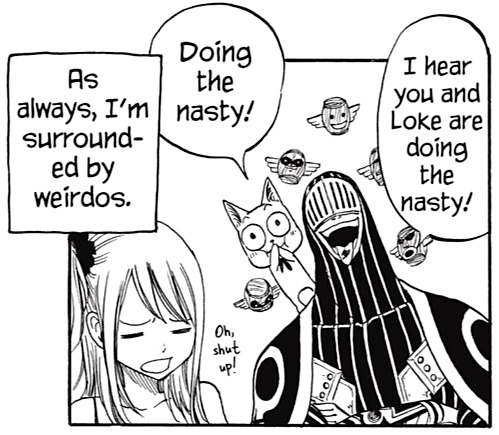
duo with a sassy mascot vibe
#fairy tail#ft happy#lucy heartfilia#ft bickslow#vol 16#ch 129#battle of fairy tail arc#funny moments#savage happy#happy the wingman
26 notes
·
View notes
Text



Dick goes to Bruce’s party and Bruce complements his work with Raptor. He gives a tip on the case that could help tie it up and calls out dick for trying to distract him from his hurt arm. Bruce then tells dick that he makes him proud. After the party dick and Bruce catch up with eachother into the morning hours. (Nightwing Vol.2 # 129)
#dc#dick grayson#nightwing#nightwing comics#bruce wayne#dick and bruce#this felt flavorless#good for them#they deserve to be boring together
44 notes
·
View notes
Text
O!Ciel's real name and why not knowing it matters.
! Spoiler warning !
I want to share a thought that came to me about a year ago. Many fans of the manga "Black Butler" often wonder about the real name of O!Ciel (later, the young master) and put forth various theories on this matter. It sometimes gets to the point where people leave the fandom for a while, returning only to ask about the name reveal, completely losing interest in other, more significant events in the manga. Then I asked myself: do we really need to know his real name?
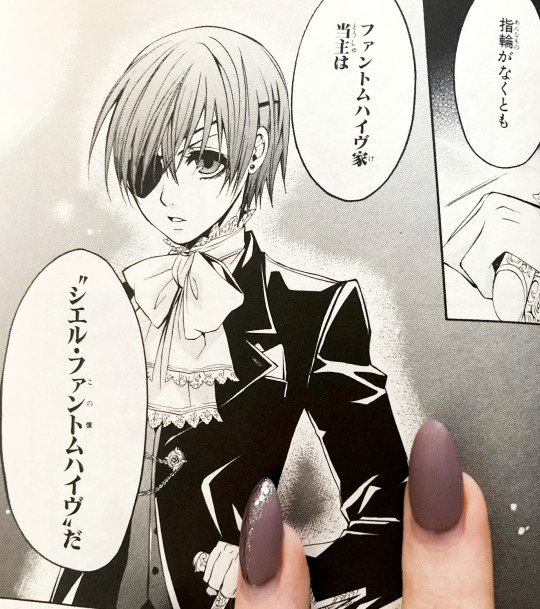
With this ring on not, I — «Ciel Phantomhive», am the head of the Phantomhive family. (Vol. 1, ch. 2)
In this article I will mainly use screenshots with the official English translation by Yen Press, as it can be challenging to find Japanese ones. Additionally, my knowledge of the Japanese is extremely limited. However, I also consult various Japanese sources and materials available on the internet. I am aware that even the official translation may not always be accurate. Toboso puts a lot of meaning into the text, and some of it may get lost in translation. However, in the context of this topic, there should not be any problems.
First, let's touch on an equally important thing, the very essence of names. Our name is what defines who we are. It represents our identity, our individuality. When you know someone's name, it breaks down barriers and makes the person feel more open and honest. Additionally, there are charactonyms, which are commonly used in the media. Charactonym already provide the viewer or reader with some information about the character and give them a chance to reflect on the character's personality. However, if a character doesn't have a name, it becomes more difficult to read through them. Does this apply to the young master? Let's find out.
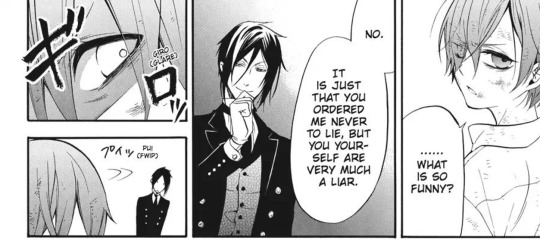
(Vol. 13, ch. 62)
From the very beginning the young master hid a lot from us: his controversial motives and a mysterious past that was gradually revealed in the smallest details until it reached a turning point. At that moment, the reader realized that they didn't really know anything about him. It turns out that the younger Phantomhive has been deceiving everyone for a long time, including you.
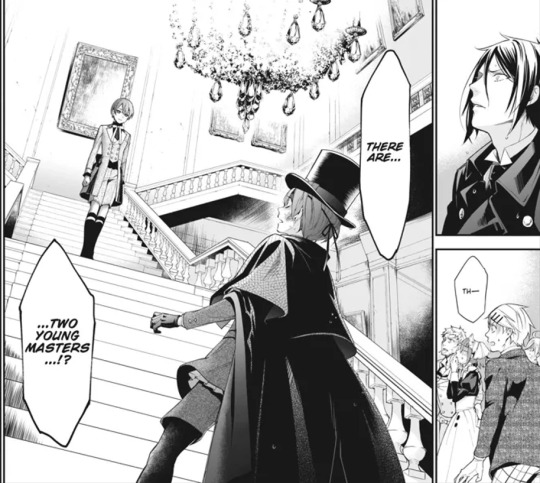
(Vol. 26, ch. 129)
Why did the young master took his older brother's name after his death?
I've often heard people make the following assumptions:
He was an unloved child and envied his older brother.
To avoid legal issues and to get the inheritance and title right away.
For Ciel's sake.
The first one can be immediately put aside. The assumption that the younger brother was not so loved in the family is refuted by the manga itself, you don't even need to dig far.
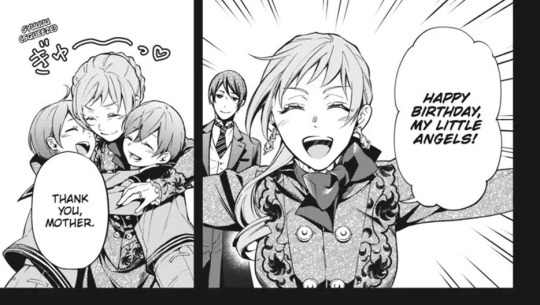
(Vol. 26, ch. 133)
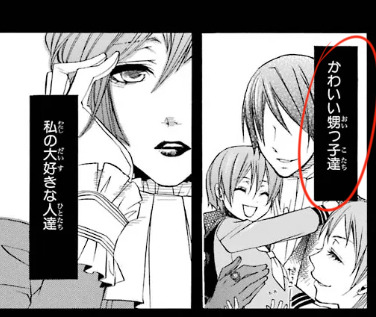
My sweet nephews. (Vol 3, ch 10)
The young master was loved no less than Ciel. People often suggest that he is an "unloved younger son", basing their argument on the following frame:

The young master deluding himself, succumbing to the manipulations of the demon. (Vol. 27, ch. 137)
However, no one told him that he was unloved and that they would be upset if he comes back. (Edited. I do believe there was some pressure with the whole heir thing, which planted seeds of doubt in a little child, but overall his family did loved him) He compared himself to Ciel. He looked up to him, but at the same time, he felt inferior and didn't see his own strengths. Instead focusing on his weaknesses. It was precisely because this child was not capable of loving himself that he decided that the (self-proclaimed) "weak spare" should not have survived.
The second assumption also irrelevant, because the young master had no idea of becoming the first heir and taking on the role of the queen's watchdog. He didn't let the fact of not becoming an earl get to him. Instead, he decided on what he wanted to dedicate his future to, aiming to become a worthy younger son that everyone would be proud of.

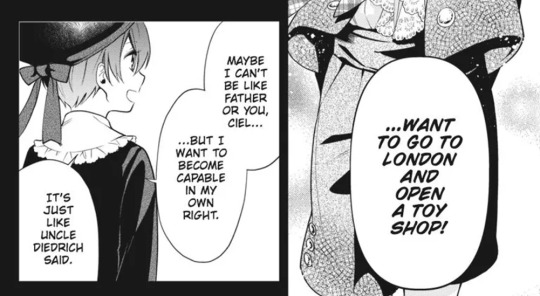
(Vol. 26, ch. 132)
And the third assumption is the one I personally follow!
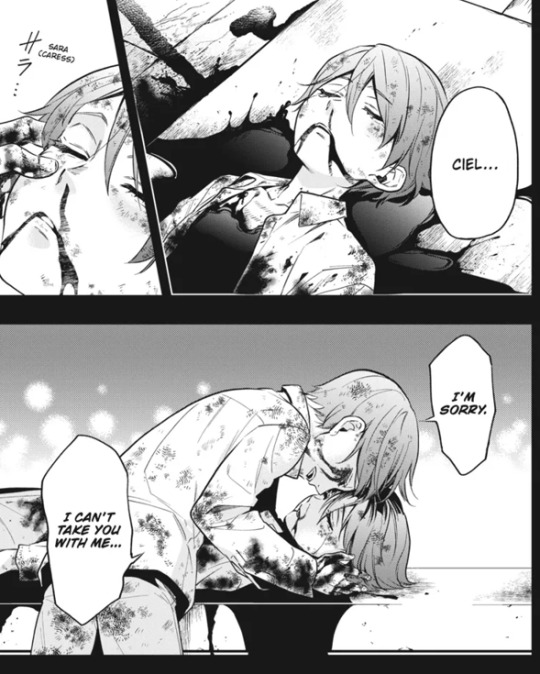
(Vol. 28, ch. 140)
The young master suffered a lot during that time time in the cult, which greatly weakened his mental state and worldview, but he wasn't a bad child. He loved his older brother, even more than himself. That's why he decided that only Ciel deserved to be saved. He buried his true self and became Ciel, strong and invincible, the kind of Ciel that his older brother could not become.

(Vol. 27, ch. 137)
And I think that at that moment everything we knew about the young master, his motivation and the name itself began to take on new meanings.
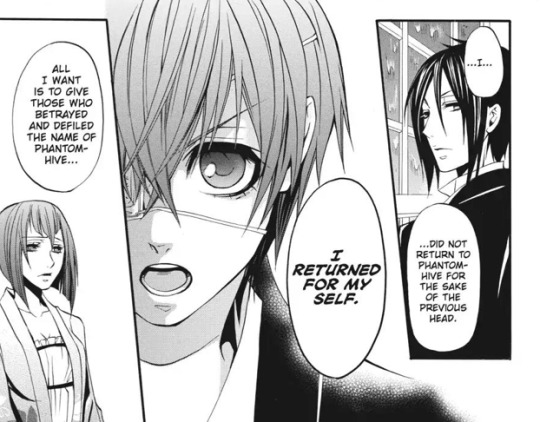
(Vol 2, ch. 8)
The younger brother is gone. He disappeared forever, along with the essence of the real Ciel. Only "Earl Ciel Phantomhive" remains...
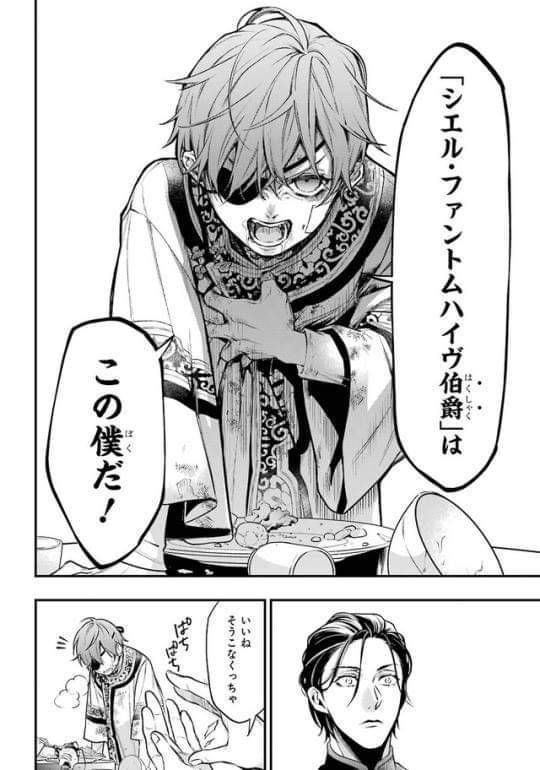
〞Earl Ciel Phantomhive〟— is I! (Vol. 28, ch. 147)
...And that's all we need to know.
Will the reveal of the young master's real name affect anything?
...No. It will just ruin all the charm and depth of this story, nothing more. The young master rose to prominence, becoming the owner of the esteemed company «Phantom» and the queen's watchdog. He took on the name Earl Ciel Phantomhive, leaving his past behind. After all, we cannot retrieve what we have lost. I am completely sure that the name will not be revealed, no matter how much some people would want to.
Other characters whose real names we don't know.
It's funny that while going on and off about the name of the young master, everyone seems to forget that there are still many characters in this story whose names we don't know. Without going far, we have Sebastian, Undertaker, most of the circus troupe. Moreover, we don't know if they have names at all. Take Sebastian as an example — he was given a name of the young master's dog. We know that this is not his true name, as he could have served many other people who gave him different names. Do we need to know the specific names? No, it doesn't affect anything. All that matters to us is that he is now Sebastian, the faithful dog of the young master.
I can only believe that the Undertaker's name will be revealed at some point in the future. It may be very significant in the context of his background.
And that's all. While being part of the fandom, I managed to see only one person who, like me, does not consider it necessary to know the young master's birth name. Therefore, I hope that someone else will find my thoughts on this matter interesting. Thank you for reading! (˶ᵔ ᵕ ᵔ˶)
#kuroshitsuji#black butler#o!ciel#r!ciel#name reveal#ciel phantomhive#analysis#manga#sebastian michaelis#rachel phantomhive#madame red#angelina dalles#we won't get name reveal so calm down
140 notes
·
View notes
